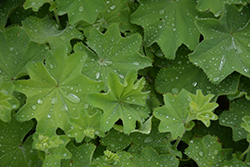Fri & Sat 8am - 8pm
Sun 8am - 7pm
Anytown, USA 12345
fax: 261.787.0463
e-mail: info@successgc.com


Plant Finder

Height: 18 inches
Spread: 18 inches
Sunlight:
![]()
![]()
![]()
Hardiness Zone: 2a
Description:
A low growing selection that features tiny chartreuse star shaped blooms and green, scalloped foliage; from shade to sun this variety is drought tolerant and easy to maintain; great for groundcover, garden beds and borders
Ornamental Features
Lady's Mantle features subtle cymes of chartreuse flowers at the ends of the stems from early to mid summer. The flowers are excellent for cutting. Its crinkled round leaves remain lime green in color throughout the season.
Landscape Attributes
Lady's Mantle is a dense herbaceous perennial with a mounded form. Its medium texture blends into the garden, but can always be balanced by a couple of finer or coarser plants for an effective composition.
This is a relatively low maintenance plant, and is best cleaned up in early spring before it resumes active growth for the season. Deer don't particularly care for this plant and will usually leave it alone in favor of tastier treats. It has no significant negative characteristics.
Lady's Mantle is recommended for the following landscape applications;
- Mass Planting
- Rock/Alpine Gardens
- Border Edging
- General Garden Use
- Groundcover
Planting & Growing
Lady's Mantle will grow to be about 18 inches tall at maturity, with a spread of 18 inches. Its foliage tends to remain dense right to the ground, not requiring facer plants in front. It grows at a medium rate, and under ideal conditions can be expected to live for approximately 10 years. As an herbaceous perennial, this plant will usually die back to the crown each winter, and will regrow from the base each spring. Be careful not to disturb the crown in late winter when it may not be readily seen!
This plant performs well in both full sun and full shade. It is very adaptable to both dry and moist locations, and should do just fine under typical garden conditions. It is not particular as to soil type or pH. It is highly tolerant of urban pollution and will even thrive in inner city environments. This species is not originally from North America. It can be propagated by cuttings.


